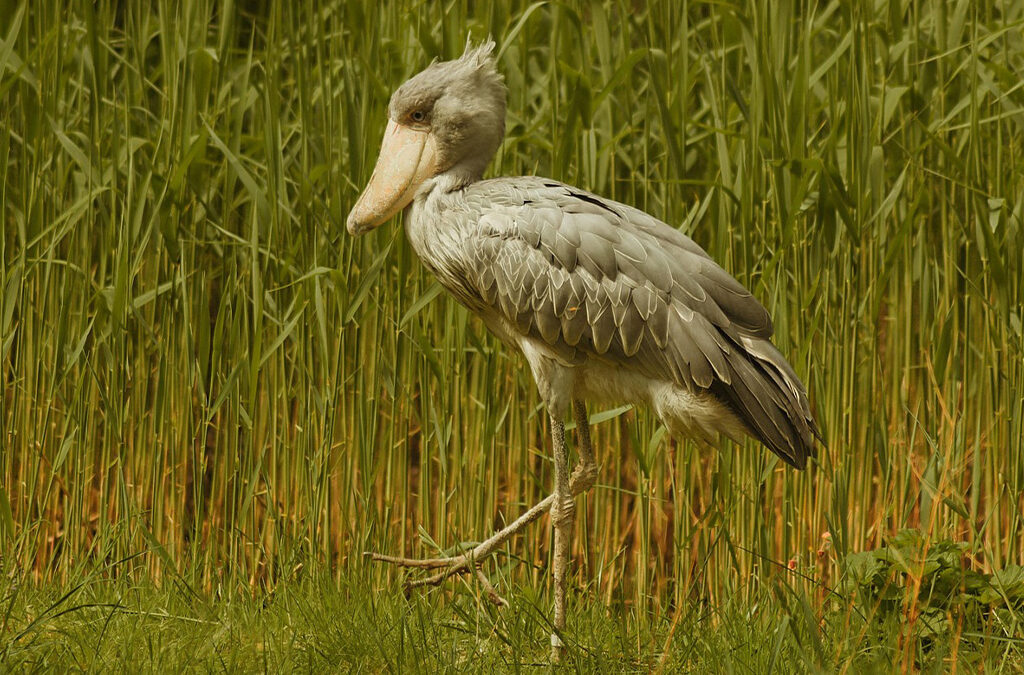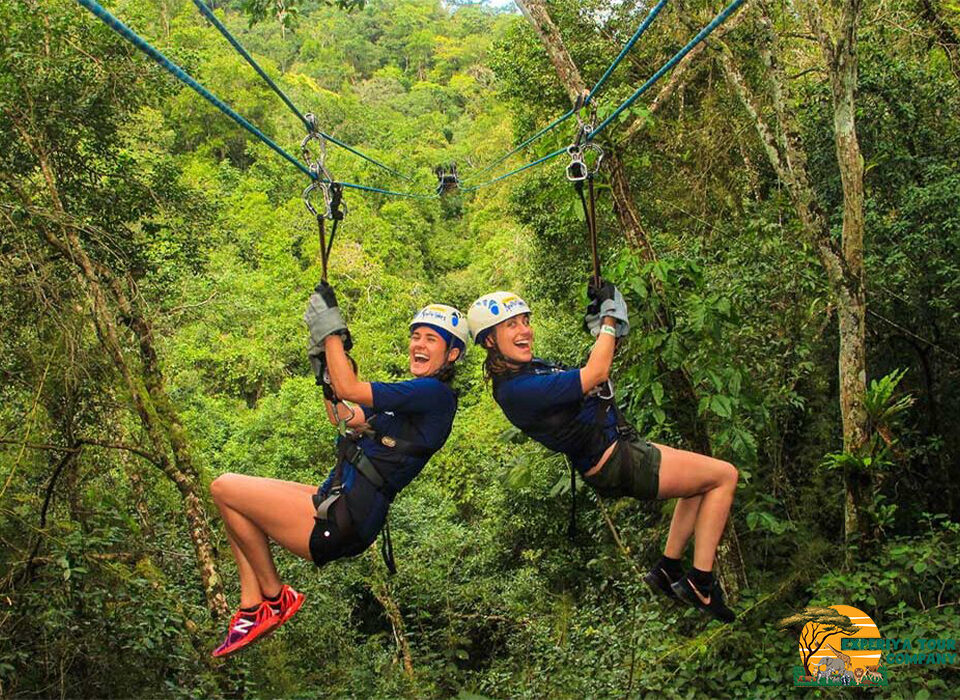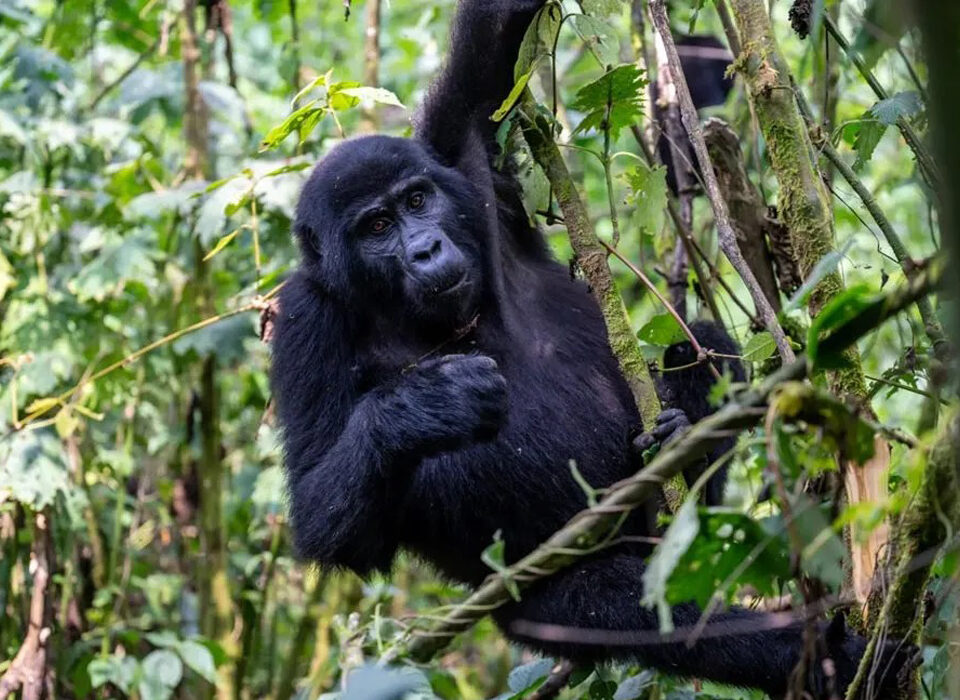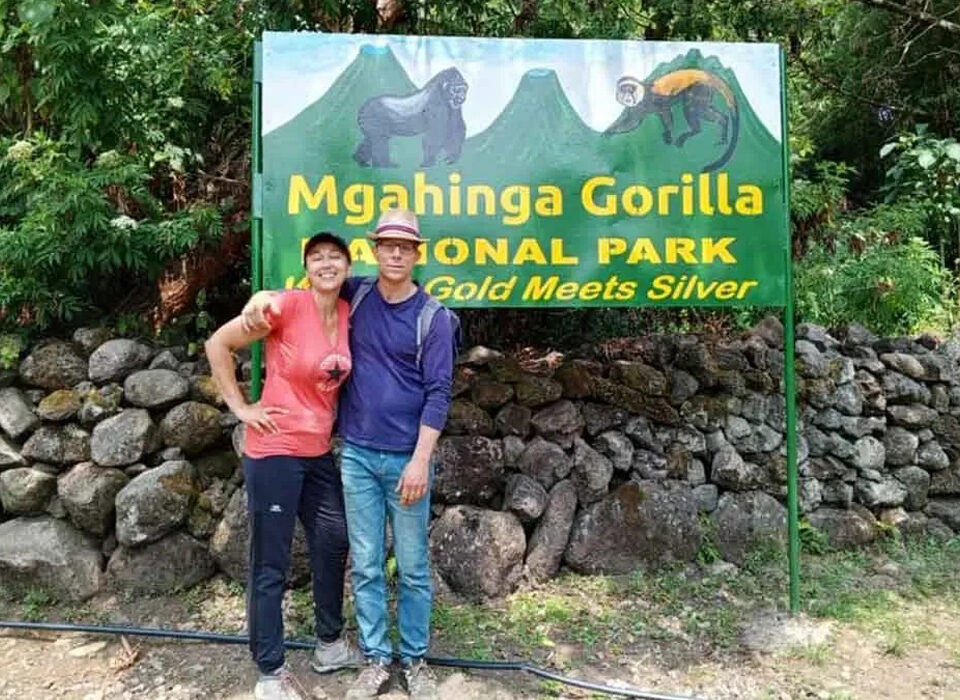
Gorilla Habituation Experience in Uganda
June 23, 2025
5 Day Uganda Gorilla and Chimp safari through Kigali
June 23, 2025Best Time to See the Shoebill Stork in Mabamba Wetland

Best Time to See the Shoebill Stork in Mabamba Wetland?
The best time to see the shoebill stork in Mabamba is during the dry season when these birds have to come out of the deep ends of the swamp to search for food and other supplies. The early mornings of each day may provide the best time of the day to see the shoebill when less fishing activity is happening.
During the dry season, the water remains calm due to the reduced winds, which prevents the surface from becoming choppy. The dry season typically spans June, July, August, September, December, January, and early February.
This period also makes it easier to photograph or film the shoebill and other swamp birds, as the calm conditions allow for capturing these wild birds from various angles.
Where is Mabamba Swamp?
Mabamba Swamp, located on the shores of Lake Victoria in Uganda, is a birdwatcher’s paradise. This extensive wetland is renowned for being one of the best places in the world to spot the elusive shoebill stork. With its prehistoric appearance and unique behaviors, the shoebill is a must-see for any avid birder. But when is the Best Time to See the Shoebill Stork in Mabamba Wetland ?
How to Get to Mabamba Swamp for Shoebill Stork Viewing
Getting to Mabamba Swamp is relatively straightforward, especially if you are starting from Kampala or Entebbe. Here are the steps to reach this birding haven:
From Entebbe by Boat: The easiest route is via the Nakiwogo landing site in Entebbe. From here, you can take a 10-minute ferry crossing to Kasanje landing and then drive for about 20 minutes to Mabamba Swamp. This route offers scenic views of Lake Victoria and the surrounding landscapes.
From Kampala by Road: If you are coming from Kampala, you can drive to Mabamba Swamp via the Nakawuka-Kasanje road. The drive takes approximately 1.5 to 2 hours, depending on traffic and road conditions.
Best Time to See the Shoebill Stork
The best time to see the shoebill stork in Mabamba Swamp is during the dry season, which typically runs from December to February and June to August. During these months, the water levels in the swamp are lower, forcing the shoebills to come out of the deeper parts of the swamp in search of food. Early mornings are particularly ideal for spotting these birds, as there is less fishing activity, and the shoebills are more active and visible.
What Else to See in Mabamba Swamp Other Than the Shoebill Stork
While the shoebill stork is the star attraction, Mabamba Swamp is home to a diverse array of bird species and other wildlife. Some of the notable birds you can spot include:
Blue Swallow
Pallid Harrier
Papyrus Gonolek
Swamp Flycatcher
Pygmy Goose
Lesser Jacana
White-winged Warbler
Grosbeak Weaver
Palm-nut Vulture
Carruther’s Cisticola
In addition to birds, Mabamba Swamp is also home to the endangered Sitatunga antelope, which can be spotted grazing in the swampy areas.
Where Else to Do Birding in Uganda
Uganda is a birding paradise with numerous hotspots across the country. Here are some of the best places for bird watching in Uganda:
Murchison Falls National Park:
Birding in Murchison Falls National Park is always a rewarding experience, enhanced by the park’s diverse wildlife and stunning landscapes, including the iconic Murchison Falls. As you walk through the dry thorn shrub between Red Chilli Rest Camp and the ferry crossing, you might spot birds such as the Blue-bellied Warblers, Black-headed Gonolek, Vitelline Masked Weaver, and Green-winged Pytilia.
During a boat trip on the Victoria Nile, you can see various birds along the shore, including African Skimmers, African Fish Eagles, and Grey Crowned Cranes. There is also a good chance of spotting the elusive shoebill stork near the Nile Safari Camp, just outside the park boundary.
Murchison Falls National Park is one of the premier destinations for a Uganda game safari. The boat cruise to Murchison Falls is a highlight, offering mesmerizing views as you approach the world’s most powerful waterfall. Additionally, the park offers activities like chimpanzee trekking in Kaniyo Pabidi Forest, making it a versatile and exciting destination for wildlife enthusiasts.
Makanaga Swamp
Makanaga Swamp located in Mpigi district is renowned for its rich birdlife, making it a prime destination for birdwatching. The swamp provides a perfect habitat for the shoebill stork, a rare and prehistoric-looking bird that draws birders from around the world. The shoebill, known for its large, shoe-shaped bill, can often be seen standing motionless in the swamp, waiting to catch fish.
In addition to the shoebill, Makanaga Swamp is home to over 300 bird species, including the Yellow-billed Duck, Spur-winged Goose, White-faced Whistling Duck, and Malachite Kingfisher. The swamp’s diverse ecosystem supports a variety of other bird species, making it a rewarding spot for avid birders.
Queen Elizabeth National Park:
Nestled within the floor of the Rift Valley, Queen Elizabeth National Park boasts one of the longest lists of bird species in the world. With over 605 bird species recorded and counting, this park is a birdwatcher’s paradise. The diverse habitats, ranging from savannah and wetlands to gallery and lowland forests, contribute to this impressive variety.
In the southern part of the park, the Edward Flats provide an excellent opportunity to see saddle-billed storks and other bird species. The Kazinga Channel Swamp is another prime location where you might spot the elusive shoebill stork.
The Kazinga Channel itself is a natural magnet for a wide variety of birds, including foreign migrants and Albertine Rift endemics. During a launch cruise on the Kazinga Channel, you can spot birds such as the African Open-billed Stork, African Fish Eagle, Great and Long-tailed Cormorants, Common Squacco Heron, Swamp Flycatcher, and Yellow-backed Weaver. Best Time to See the Shoebill Stork in Mabamba Wetland.
From Baboon Cliff, you have a good chance of spotting raptors like the Lanner Falcon, Temminck’s Courser, Collared Pratincole, Snake Eagle, and Bateleur.
While exploring Queen Elizabeth National Park, you can also enjoy game drives with opportunities to see lions, leopards, waterbucks, bushbucks, hyenas, and more. The scenic crater lakes region within the park adds to the rewarding experience of visiting this remarkable destination.
Kibale National Park
Kibale Forest is renowned for its large population of chimpanzees, but it is also a prime birding destination in Uganda, boasting over 325 bird species. This tropical rainforest is a haven for a diverse array of rainforest birds.
Walking along the main road from the Kanyanchu Visitor Center to the bridge, you can spot a variety of birds. Common sightings include the scarce Grey-headed Olive back, Green-backed Twinspot, Handsome Francolin, and Black-and-white Mannikin, among others.
A visit to the Bigodi Wetland Sanctuary offers additional opportunities to see the shoebill stork and other bird species.
Kibale Forest is home to about 13 primate species, including chimpanzees, blue monkeys, pottos, vervet monkeys, grey-cheeked mangabeys, and bush babies.
Mabira Forest
Mabira Forest is another excellent birding destination in Uganda. Despite challenges from human encroachment, deforestation, and agriculture, this vast natural forest remains a birding hotspot. Birdwatchers in Mabira Forest may encounter species such as the Red-faced Woodland Warbler and Western Green Tinkerbird.
From Mabira Forest, you can visit the source of the River Nile in Jinja. The dramatic point where the Nile waters surge from the calm Lake Victoria is a sight to behold.
Bwindi Impenetrable National Park
Bwindi Forest is famous for its mountain gorillas but is also a birding paradise in Uganda, with over 350 bird species, including Albertine Rift endemics. The Ruhija sector is particularly popular for birding, offering a chance to combine gorilla trekking with birdwatching.
Birding in Bwindi Forest may reveal species such as the Red-faced Woodland Warbler, African Hill Babbler, White-tailed Crested Flycatcher, Collared Apalis, Mountain Masked Apalis, Chestnut-throated Apalis, and Cinnamon-chested Bee-eater.
Bwindi Impenetrable National Park has four gorilla trekking areas: Buhoma, Rushaga, Ruhija, and Nkuringo. A gorilla permit is required for trekking. The Park also offers a gorilla habituation experience, allowing visitors to spend four hours with a semi-habituated gorilla family, for which a special permit is needed.
Mgahinga National Park
Located in southwestern Uganda, Mgahinga National Park is home to mountain gorillas and is an emerging birding destination with over 115 bird species identified. Birding in Mgahinga can be particularly rewarding along the gorge trail, which loops halfway up Mount Sabyinyo.
Bird species you might encounter in Mgahinga include the Malachite Sunbird, Montane Double-collared Sunbird, Alpine Chat, and Rwenzori Turaco.
Mpanga Forest
Mpanga Forest, situated along the Kampala to Masaka Road, is a great birding spot on the outskirts of Kampala. Birdwatchers in Mpanga Forest may see species such as the Red-faced Woodland Warbler and Vitelline Masked Weaver.
Is Birding in Mabamba Swamp Safe?
Yes, birding in Mabamba Swamp is safe. The local community has embraced conservation efforts, and many former fishermen have been trained as bird guides. These guides are knowledgeable about the swamp and its inhabitants, ensuring a safe and informative birding experience. Additionally, the swamp is a Ramsar-listed wetland of international importance, highlighting its significance and the efforts to protect it.
How Long Does It Take to Locate the Shoebill in Mabamba Swamp?
The time it takes to locate the shoebill in Mabamba Swamp can vary. On average, it takes about 1 to 2 hours to spot the shoebill, depending on the bird’s location and the time of day. Early mornings are generally the best time to increase your chances of a sighting.
Is Birding in Mabamba Swamp Difficult?
Birding in Mabamba Swamp is relatively easy and accessible to birders of all levels. The swamp is navigated by boat, and the local guides are skilled at manoeuvring through the channels to find the best birding spots. The terrain is flat, and the boat rides are generally smooth, making it a comfortable experience for most visitors.
What to Pack for a Birding Safari to Uganda (Mabamba Swamp)
When planning a birding safari to Uganda, especially to Mabamba Swamp, it’s essential to pack appropriately to ensure a comfortable and successful trip. Here are some items to consider:
Binoculars: Essential for spotting birds from a distance.
Camera: To capture the stunning birdlife and landscapes.
Field Guide: A birding field guide specific to East Africa or Uganda.
Comfortable Clothing: Lightweight, breathable clothing in neutral colours to blend in with the environment.
Hat and Sunglasses: To protect against the sun.
Insect Repellent: To ward off mosquitoes and other insects.
Waterproof Gear: Including a rain jacket and waterproof bag for your equipment.
Snacks and Water: To stay hydrated and energized during your birding excursions.
Notebook and Pen: To jot down notes and bird sightings.
For more information about Best Time to See the Shoebill Stork in Mabamba Wetland Contact us



